You are using an out of date browser. It may not display this or other websites correctly.
You should upgrade or use an alternative browser.
You should upgrade or use an alternative browser.
VTOL On Demand Mobility
- Thread starter Grey Havoc
- Start date
-
- Tags
- 21st century
- Joined
- 27 May 2008
- Messages
- 1,045
- Reaction score
- 2,009
I hope that I miss something. Otherwise from my point of view eVTOL is not really practical.
To those who understand the practical issues, it’s been obvious for a few years that the whole eVTOL industry viability was/is dependent on the development of battery energy/power density. Joby’s 150 mile flight was done with zero payload and pilotless ie the pilots were replaced by battery packs…. No use beyond publicity.
When the eVTOL thing got underway four or five years ago, predictions were being made that batteries energy/power density would increase dramatically, and well, it just hasn’t. I never understood why these predictions were believed and looking back those behind them were they were poorly qualified to make such claims. Maybe Southsea Bubble or cold fusion or Mr Ponzi like.
A simple observation;- Lithium is the third lightest element known, it’s only one electron to give up and mixing it with anything else to encourage it’s electrical properties will inherently make any battery heavier ie less power dense.
Last edited:
alberchico
I really should change my personal text
- Joined
- 14 January 2014
- Messages
- 576
- Reaction score
- 1,096
I hope that I miss something. Otherwise from my point of view eVTOL is not really practical.
To those who understand the practical issues, it’s been obvious for a few years that the whole eVTOL industry viability was/is dependent on the development of battery energy/power density. Joby’s 150 mile flight was done with zero payload and pilotless ie the pilots were replaced by battery packs…. No use beyond publicity.
When eVTOL thing got underway four or five years ago, predictions were being made that batteries energy/power density would increase dramatically, and we’ll, it just hasn’t. I never understood why these predictions were believed and looking back those behind them were they were poorly qualified to make such claims. Maybe Southsea Bubble or cold fusion or Mr Ponzi like.
A simple observation;- Lithium is the third lightest element known, it’s only one electron to give up and mixing it with anything else to encourage it’s electrical properties will inherently make any battery heavier ie less power dense.
This could explain why Joby quietly invested in a start up that is developing a hydrogen powered aircraft. They must understand their aircraft has severe range limitations and that some sort of hybrid solution will be required for greater payload and range.

Joby Secretly Bought a Hydrogen-Electric Aircraft Developer - FLYING Magazine
California-based air taxi developer Joby Aviation confirmed to FLYING that it secretly purchased German hydrogen-powered aircraft developer H2Fly.
I wonder if eSTOL aircraft that have very different flight profiles could perform better ? Maybe projects like this could be viable enough to become successful.

Lockheed Martin Invests in eSTOL Startup Electra - FLYING Magazine
Virginia-based startup Electra.aero says it has secured a key investment from Lockheed Martin as it seeks to develop a hybrid electric ultra-short takeoff and landing (eSTOL) aircraft.
A recent article in Aviation Week explained how engine makers are focusing on hybrid electric solutions for extending range having anticipated that battery power alone would not be enough to make these eVTOLs commercially viable. The article has a hard paywall, but I found some information on the solution that Rolls Royce and others are exploring here below. I think hybrid electric designs are the only practical solution right now.
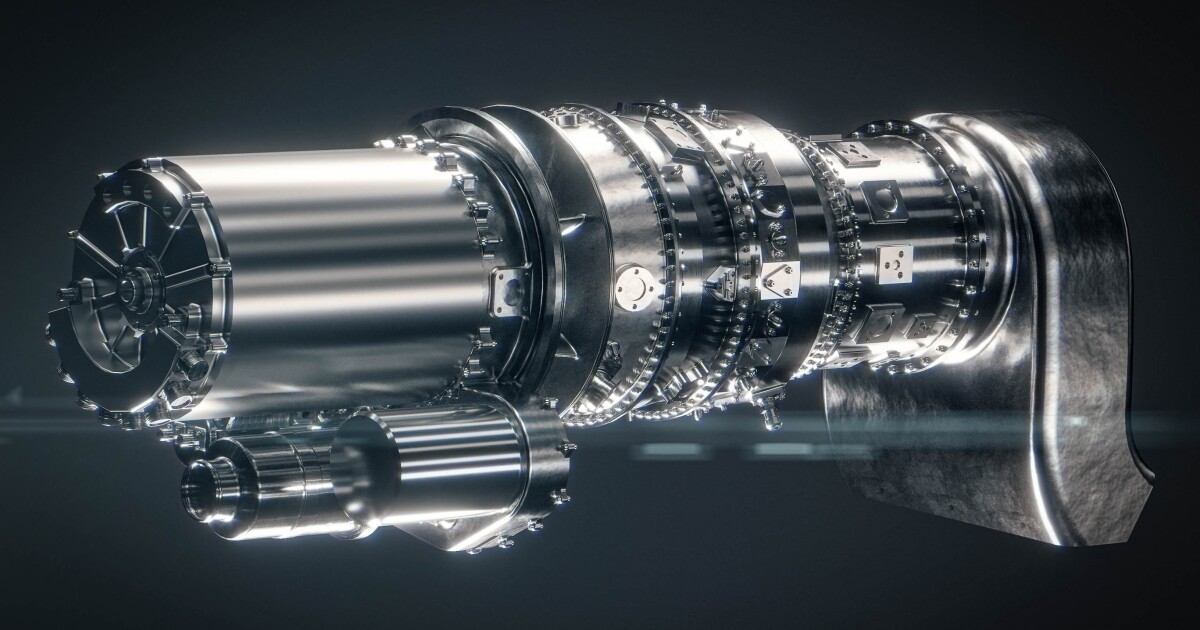
New Rolls-Royce turbogenerator upgrades any eVTOL's range and payload
Battery-electric VTOL aircraft should do a superb job as short-range cross-town air taxis, but there are a whole lot of other trips they could handle quicker and more conveniently than existing transport options if they could just fly a bit further. Several companies are now planning low-emission…

New Honeywell turbogenerator will run on aviation biofuel - evtol.com
Honeywell is developing a new, more powerful turbogenerator for hybrid-electric aircraft that will be compatible with sustainable aviation fuel.
Last edited:
One way to beat the competition is to batton them to death with a load of money. I would then be really cautious before identifying Joby buy of H2Fly as being something with great development potential.
Moreover, H2Fly are very early in their product development with a quite narrow concept.
Moreover, H2Fly are very early in their product development with a quite narrow concept.
Well it's will remain impractical while they keep cornering themselves with inappropriate mission profiles.
Interesting debate. What would be a more appropriate mission profile?
Part of me feels like the obvious mission profile optimization involves ditching VTOL, the pilot, weather constraints and certification requirements… also known as buying a Tesla (or any electric car). ;-)
- Joined
- 24 November 2008
- Messages
- 1,335
- Reaction score
- 1,690
IMHO seperate lift-cruise systems have a clear advantage in that regard.I hope that I miss something. Otherwise from my point of view eVTOL is not really practical.
To those who understand the practical issues, it’s been obvious for a few years that the whole eVTOL industry viability was/is dependent on the development of battery energy/power density. Joby’s 150 mile flight was done with zero payload and pilotless ie the pilots were replaced by battery packs…. No use beyond publicity.
When eVTOL thing got underway four or five years ago, predictions were being made that batteries energy/power density would increase dramatically, and we’ll, it just hasn’t. I never understood why these predictions were believed and looking back those behind them were they were poorly qualified to make such claims. Maybe Southsea Bubble or cold fusion or Mr Ponzi like.
A simple observation;- Lithium is the third lightest element known, it’s only one electron to give up and mixing it with anything else to encourage it’s electrical properties will inherently make any battery heavier ie less power dense.
For instance Beta's Alia (depicted):
The cruise motor could be relatively easy replaced with a gas turbine or piston engine. Now battery power is only required by the (four) lift motors. Hence battery volume / mass can be reduced and some space for a fuel tank becomes available.
Voilà, here you got your long endurance evtol. This is how those hybrid quadcopters became a feasible option in the UAS sector.
Yes, it's no longer pure electric then. However, it could be easily converted back once battery technology allows it.
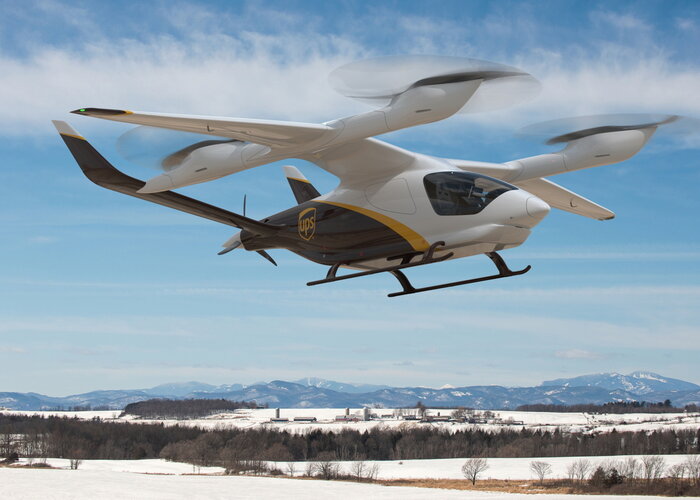
- Joined
- 24 November 2008
- Messages
- 1,335
- Reaction score
- 1,690
Not only then. That's rather a general question you'd ask yourself when you start developing a vtol aircraft.But then, you'd have to ask yourself: why do I need those mini rotors for something as E-intensive as vertical flight (E stands for Energy) when their efficiency is ridiculously low?
Joby Agrees On Revised eVTOL Certification Basis With FAA | Aviation Week Network
Joby Aviation has signed a revised certification basis for its tiltprop S4 after the FAA changed direction of certifying electric vertical takeoff and landing aircraft, and says it is still on track to launch air taxi operations in 2024.
- Joined
- 27 May 2008
- Messages
- 1,045
- Reaction score
- 2,009
X-39
To post or not to post, that is the question
- Joined
- 20 February 2021
- Messages
- 380
- Reaction score
- 876
Wooo! I've always been a fan of this concept since it was unveiled at AFWERX. Sincerely it might be a better option than the Bell's HSVTOL concept, which always seemed a bit overengineered IMHO. Hopefully this will not suffer the same fate as Aurora's Lighting Strike and potentially develop into an actual airworthy product (looking at you DARPA X-Plane)
 aviationweek.com
aviationweek.com

Jetoptera To Test HSVTOL Demo Concept In Wind Tunnel | Aviation Week Network
U.S. startup Jetoptera plans to test a blended wing body model with integrated fluidic propulsion and upper-surface blowing as it bids to win a U.S. Air Force contract to build a prototype high-speed vertical/short takeoff and landing aircraft.
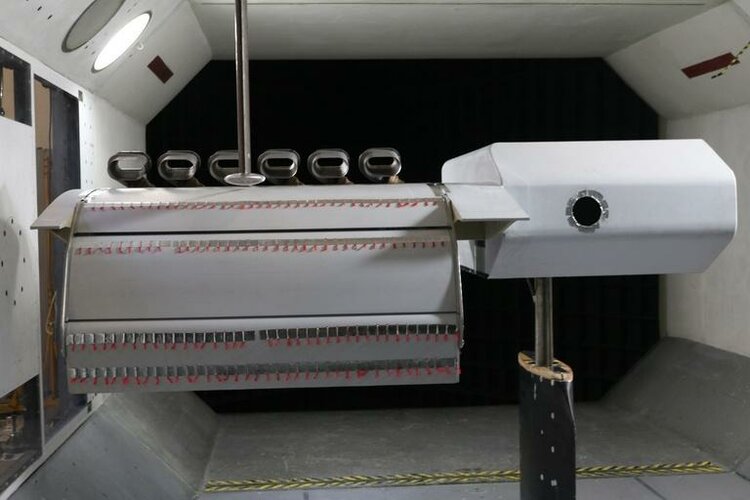

Australia Offers the Right Environment for AAM - Global Sky Media
Australia has the “magic sauce” when it comes to advanced air mobility (AAM), namely an enabling environment and a commercial environment, Wisk Aero Asia-Pacific regional director Catherine MacGowan told delegates at the AAM Summit in Melbourne, Australia, this week. Wisk recently displayed its...
 globalsky.media
globalsky.media
St Baker, Hostplus tip $23m into flying vehicle start-up
A flying vehicle start-up run by a husband and wife team is ready to take flight after scoring $23 million in funding from some of the country’s most established investors.
One would think people would have relised this by now venture capital is built on expecting 9 out of every 10 investments to fail, with the last one doing so well that it covers the loss, honestly 25% success rate would be considered a huge win by these people.
Flying taxis... Will investors go first class? Or be taken for a short, expensive ride?
Big money being ploughed into the nascent sector, which is set to be worth US$1.4 trillion by 2040Cross-industry partnerships forming with mobile telcos provid…www.telecomtv.com
Aviation Week had an interesting article 2 weeks ago where it speculated that up to 75% of these start up companies could fail and the remaining 25% would have a hard time attracting funding because all the investors who got burned won't want to sink another penny into the evtol market.
Man even if he has a point could have at lest found a ceo of a company that has at lest biult a sold a helicopter, he's not any less smoke and mirrors then the the eVtol industry.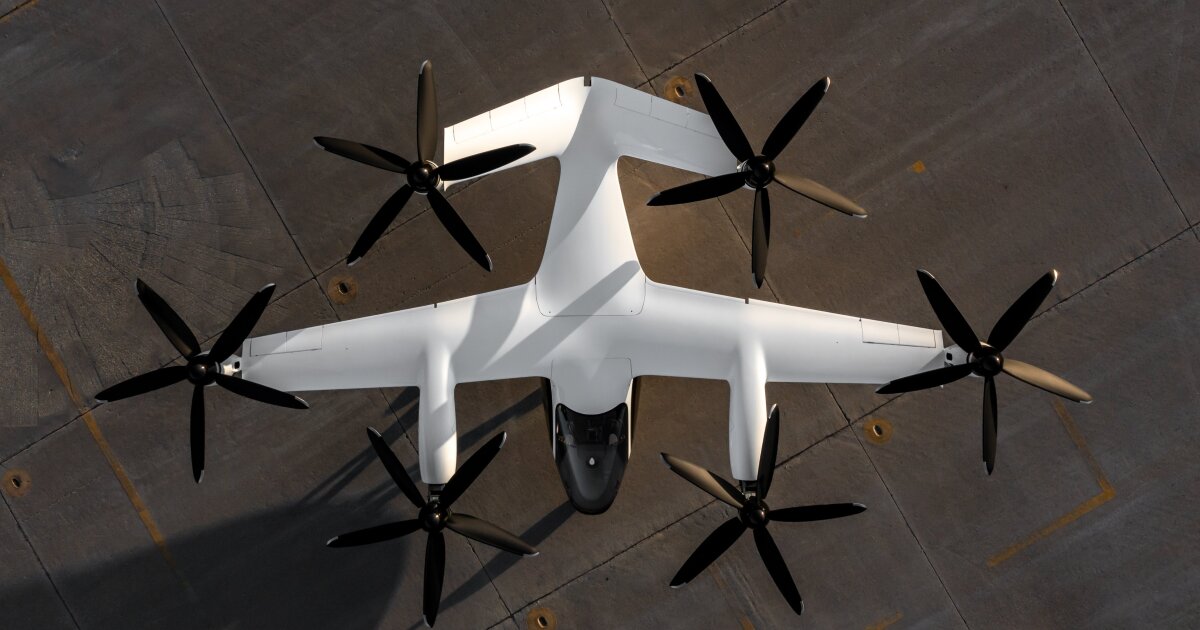
Helicopter CEO: eVTOLs have "precious little chance" and pose no threat
As lovers of future technology, we're fascinated by the promise and potential of electric VTOL aircraft – and we spend a lot of time covering the many and varied approaches that hundreds of companies are racing to bring to market. But that doesn't mean this sector has an easy path to world-changing…newatlas.com
Granted, this person is hardly an unbiased observer, but he raises some interesting points about the business case for Evtols. I personally have my doubts about how extensively these things will be used once they enter service. The article mentions rooftop to rooftop inner city flights being the goal, but here in New York, ever since a gruesome accident involving a helicopter tipping over on the roof of the Pan Am building in the late 1970s that resulted in several deaths, there is no chance of rooftop flights ever getting approved in NYC. Southern California on the other hand is the one market where I could see these things become a huge success for short flights.
alberchico
I really should change my personal text
- Joined
- 14 January 2014
- Messages
- 576
- Reaction score
- 1,096
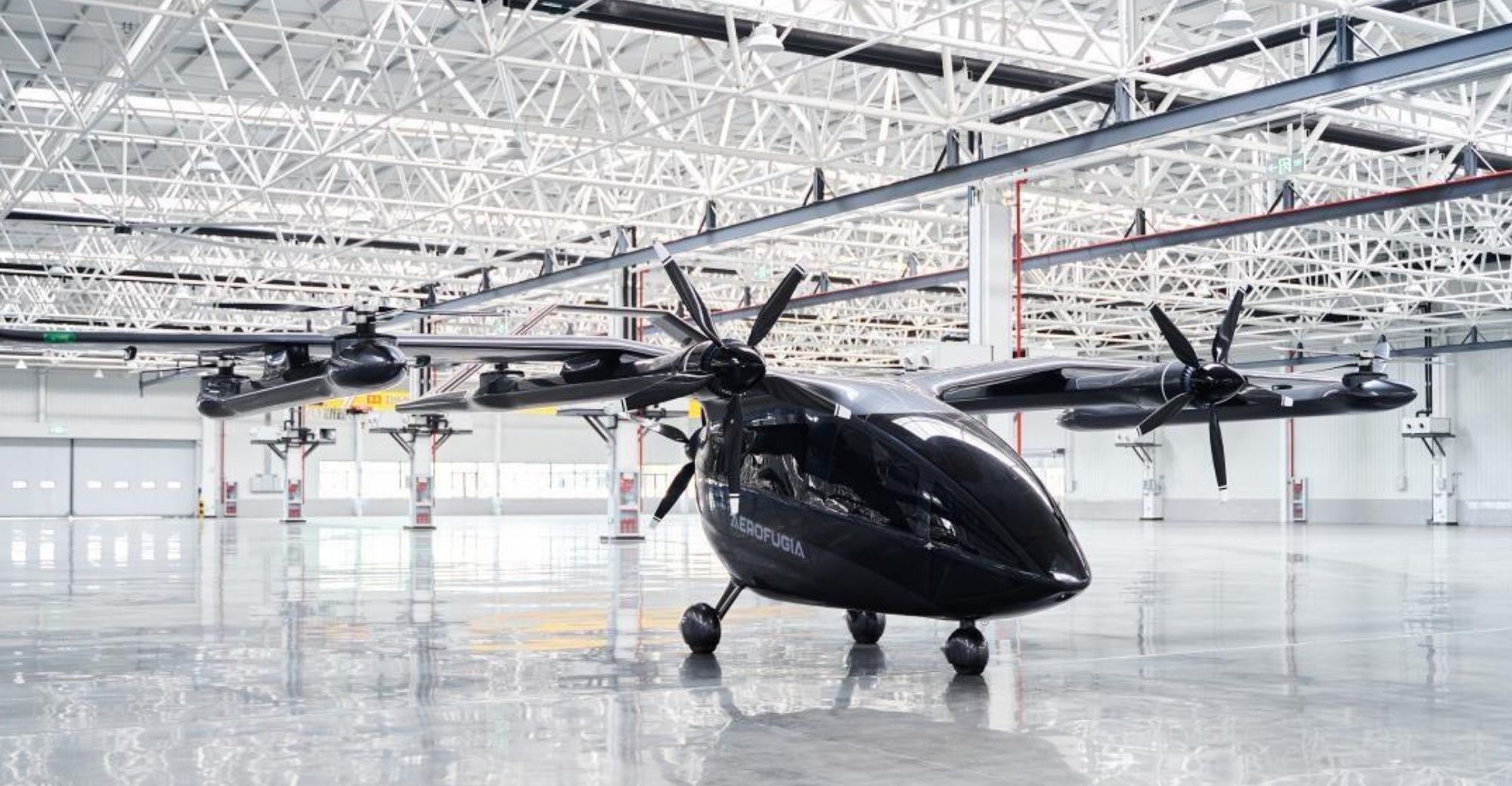
Geely's Aerofugia Debuts Self-Developed TF-2 Flying Car - Pandaily
Aerofugia, a subsidiary of Geely Technology Group, announced a full-scale technology demonstrator and the development progress of its TF-2 flying car.
 pandaily.com
pandaily.com
This project was profiled in the current issue of Aviation Week so I found this article giving more details. When it enters production, it will first focus on cargo before carrying passengers.
- Joined
- 27 May 2008
- Messages
- 1,045
- Reaction score
- 2,009
I noticed in the article, the following claim;-
“Aerofugia claims to have made a breakthrough in the key technology of the tilting dynamic process and accomplished the verification process of the tilting dynamic of the TF-2 scaled-down prototype.”
Key technology… Tilting Dynamic process? The TF2 doesn’t need a tilting dynamic process, as it a conventional aeroplane with a few vertical lifting propellers, essentially a cross between a helicopter and aeroplane. A concept including key technologies, that’s been demonstrated several times over the last half century or more , but nobody wanted it.
Claiming bollox* seems to be a key technology in a“fake it until you make it “industry.
* appearing to sound technically informed when not
“Aerofugia claims to have made a breakthrough in the key technology of the tilting dynamic process and accomplished the verification process of the tilting dynamic of the TF-2 scaled-down prototype.”
Key technology… Tilting Dynamic process? The TF2 doesn’t need a tilting dynamic process, as it a conventional aeroplane with a few vertical lifting propellers, essentially a cross between a helicopter and aeroplane. A concept including key technologies, that’s been demonstrated several times over the last half century or more , but nobody wanted it.
Claiming bollox* seems to be a key technology in a“fake it until you make it “industry.
* appearing to sound technically informed when not
Last edited:
- Joined
- 18 October 2006
- Messages
- 3,884
- Reaction score
- 3,751
I too am quite skeptical at the prospects of an EVTOL in every garage. However I also recall that the aeroplane was considered fantasy right up to 1903 by many. The helicopter was of no value, until it was. So I do think that some of the EVTOL will succeed in niche markets until demand causes more maturity with the power generation technologies.
Who knows! With arrival of quantum computing we may have "Mr. Fusion" in short order. Assuming big oil does not buy the rights and bury it in Nevada somewhere.
Who knows! With arrival of quantum computing we may have "Mr. Fusion" in short order. Assuming big oil does not buy the rights and bury it in Nevada somewhere.
- Joined
- 9 October 2009
- Messages
- 19,999
- Reaction score
- 10,534
What was old is new again.IMHO seperate lift-cruise systems have a clear advantage in that regard.
@yasotay : don't take me wrong, I am not placarding the concept. Just the way this type of entrepreneurs have taken and claimed every rights (and money) on it.
In a startup, the factory is the product. That why I say it's a modern circus since sustaining the idea that they are achieving something is the only end goal here. That and, obviously, entertaining naive investors in their beliefs.
In a startup, the factory is the product. That why I say it's a modern circus since sustaining the idea that they are achieving something is the only end goal here. That and, obviously, entertaining naive investors in their beliefs.
Last edited:
alberchico
I really should change my personal text
- Joined
- 14 January 2014
- Messages
- 576
- Reaction score
- 1,096
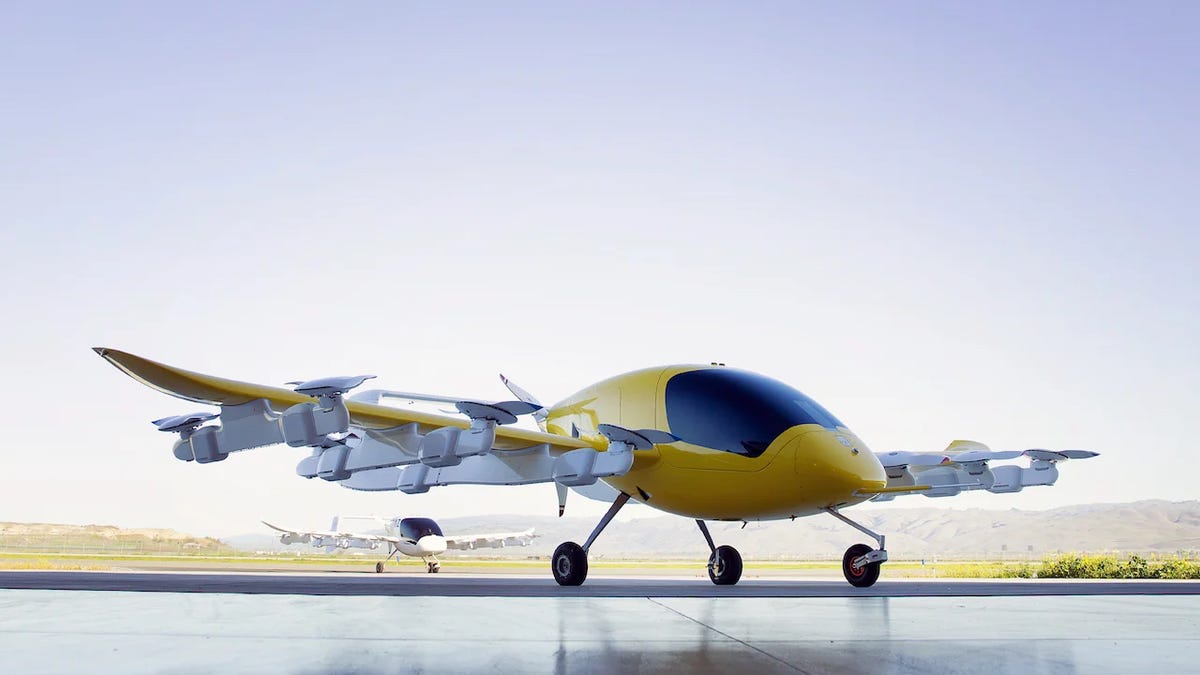
Air Taxi Company Kittyhawk Calls It Quits
The startup financed by Google co-founder Larry Page announced it was “winding down” work on all its flying taxi prospects.
 gizmodo.com
gizmodo.com
View: https://mobile.twitter.com/FlightGlobal/status/1572752681415983105
But their sister company Wisk Aero survives and today they unveiled a roadmap to achieve their goals of establishing air taxi service.

Boeing and Wisk Unveil First Operational Roadmap for Self-Flying Air Taxis - FLYING Magazine
For the first time, California-based electric vertical takeoff and landing (eVTOL) aircraft developer Wisk Aero and its major backer Boeing (NYSE: BA) have released a comprehensive concept operations report for their uncrewed, self-flying air taxis.
I'm genuinely surprised that more of these startups haven't collapsed by now.
Last edited:
alberchico
I really should change my personal text
- Joined
- 14 January 2014
- Messages
- 576
- Reaction score
- 1,096
We finally get a close up look at what the cockpit of the Joby evtol will look like. I wonder, if the fly by wire system makes flying this thing as easy and simple as it looks, could a pilot without a helicopter rating be trained to operate this aircraft or wound the FAA prohibit that ?
Last edited:
Well, given that you apparently need a deserted airport with a class B runway to land you marvelous machine, probably that you are among the lucky ones that survived Tanos or any apocalyptical events. You shouldn't worry much.
Last edited:
I browsed that - and boy was that ugly and disgusting. Four passengers chopped to bits, and a fifth person killed by a flying rotor blade like a missile, down on the street. All this just because a side wheel failed and the S-61 tipped over.but here in New York, ever since a gruesome accident involving a helicopter tipping over on the roof of the Pan Am building in the late 1970s that resulted in several deaths
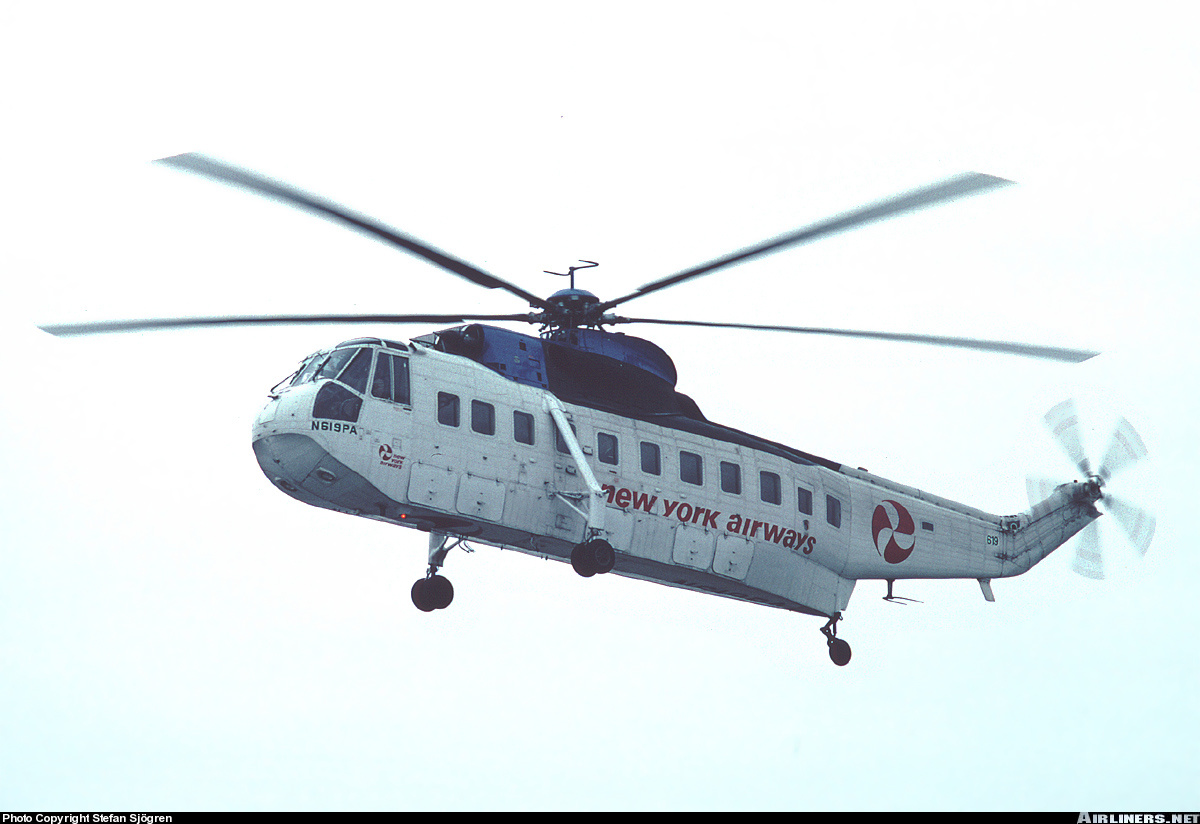
16 May 1977 - This Day in Aviation
16 May 1977: At approximately 5:32 p.m. Eastern Standard Time, New York Airways Flight 971, a Sikorsky S-61L helicopter, landed at the Pan Am Building rooftop heliport (JPB) in New York City. Flight 971 had originated at John F. Kennedy International Airport (JFK) and carried 20 passengers and a...
www.thisdayinaviation.com
Last edited:
There’s also the PanAm helicopter shuttle accident where one of the passengers had a bag full of cash (South American - a little sketchy). When he realized that the ground crew were putting it in the baggage hold instead of the cabin, he got out of the helicopter and walked around the back to get it…
… needless to say he didn’t make it to the other side. I’ve always felt bad hearing this story for his wife who was still on board and had to witness the whole thing.
… needless to say he didn’t make it to the other side. I’ve always felt bad hearing this story for his wife who was still on board and had to witness the whole thing.
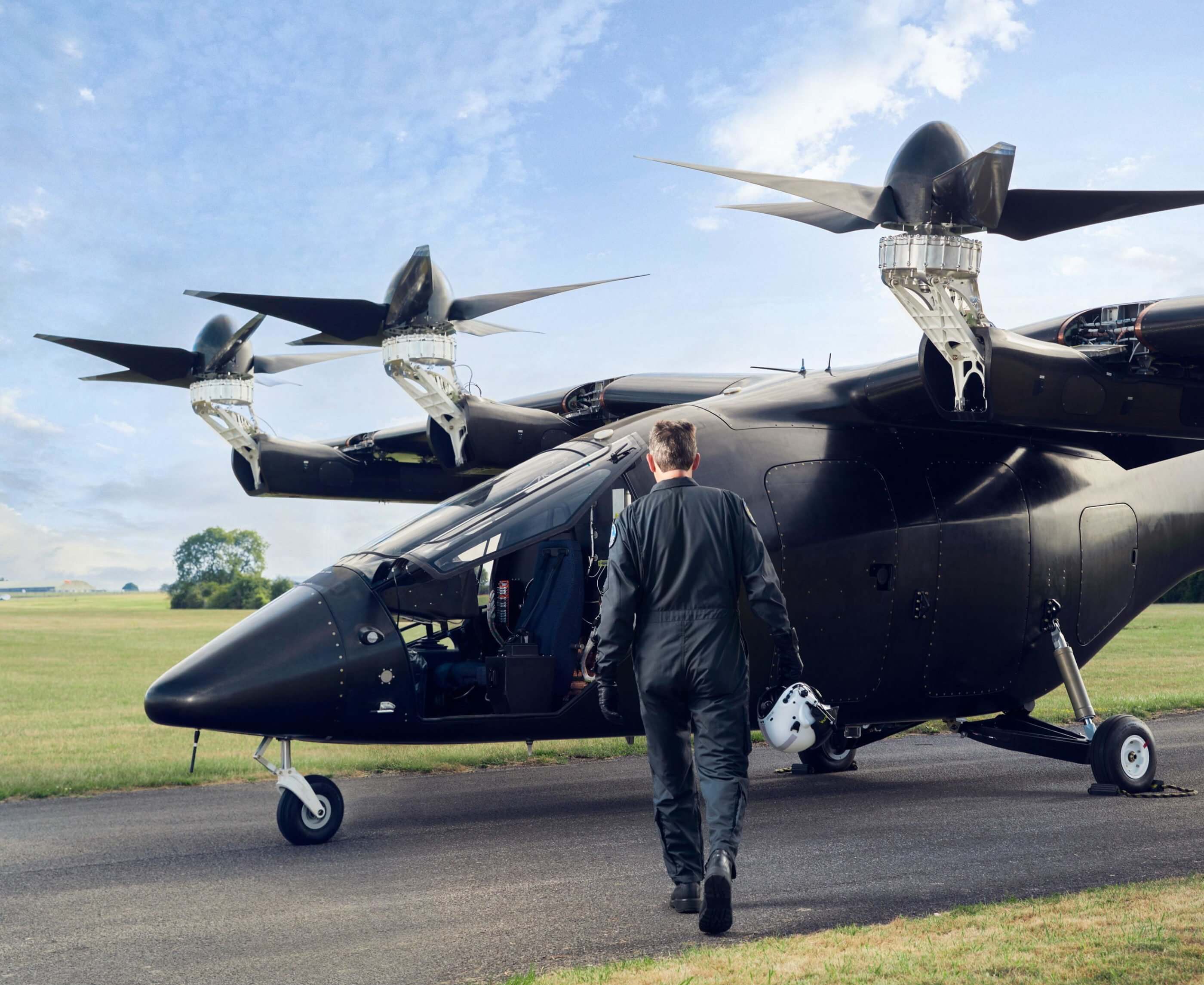
Vertical Aerospace's VX4 takes flight
Vertical Aerospace's electric VX4 prototype has conducted its very first airborne test, following the company receipt of its “permit-to-fly” from the U.K.’s Civil Aviation Authority.
alberchico
I really should change my personal text
- Joined
- 14 January 2014
- Messages
- 576
- Reaction score
- 1,096
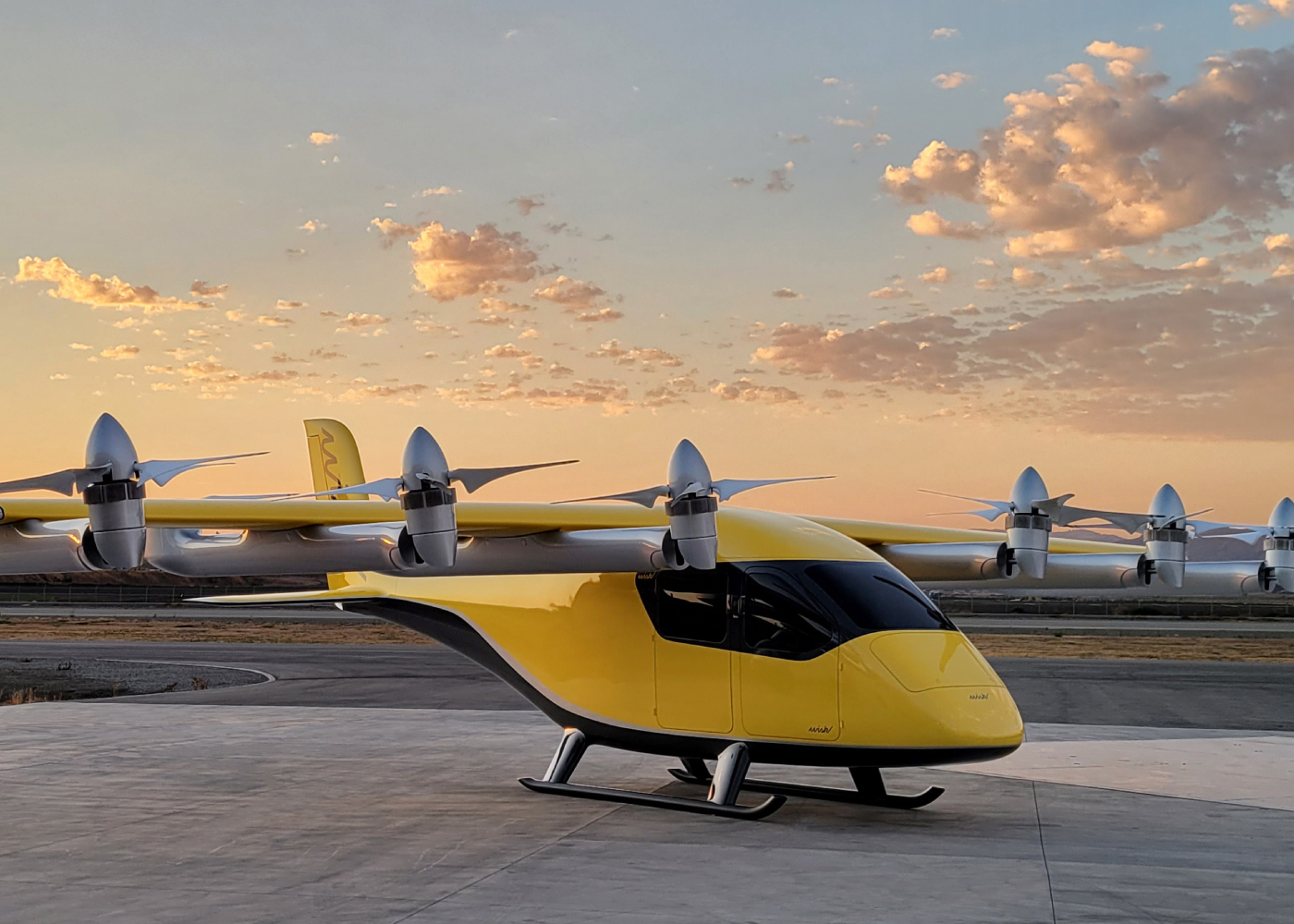
Wisk unveils its 6th-generation autonomous eVTOL mock-up
Wisk has unveiled its sixth-generation eVTOL mock-up on Oct. 3 — the model it intends to get type certified with the FAA as an autonomous air taxi.
Finally we get to see the definite version of this design that will eventually enter service. Also seems risky to go for fully autonomous flight operations right from the start. It might take some time to convice the FAA to sign off on that. The Joby approach of having a pilot in the aircraft in the beginning and later transitioning to self flying seems like the wiser choice. They must think that their partnership with Boeing regarding the development of autonomous flight controls might reassure skeptical regulators.
- Joined
- 1 May 2007
- Messages
- 2,460
- Reaction score
- 1,453
Boeing regarding the development of autonomous flight controls might reassure skeptical regulators.
*cough* MCAS . . . *cough*
cheers,
Robin.
alberchico
I really should change my personal text
- Joined
- 14 January 2014
- Messages
- 576
- Reaction score
- 1,096
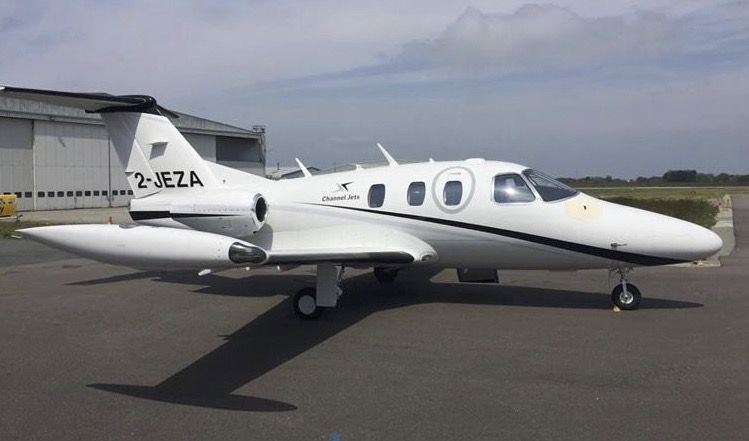
Consultant: Time Could Be Running Out For Big-Buck Investment Cash Flow - AVweb
Consultant: Changing financial conditions could bring an end to easy money for aviation start-ups.
 www.avweb.com
www.avweb.com
Could this be the beginning of the end for these Evtol startups that have gobbled up funds for years without producing any actual hardware ?
A number have produced hardware
alberchico
I really should change my personal text
- Joined
- 14 January 2014
- Messages
- 576
- Reaction score
- 1,096
Here is a detailed look at the Wisk mock up showing the features it will have.
The flight safety strategy is good. I see it the way to go. Probably that an onboard emergency landing system will be mandatory (a land somewhere there around!! button).
It's good to see constructive innovation coming from the startup world once in a while.
It's good to see constructive innovation coming from the startup world once in a while.
- Joined
- 27 May 2008
- Messages
- 1,045
- Reaction score
- 2,009
“The interior even has somewhere to plug your mobile phone into”
Yeah, to keep flying, this thing needs all the battery it can get.
alberchico
I really should change my personal text
- Joined
- 14 January 2014
- Messages
- 576
- Reaction score
- 1,096
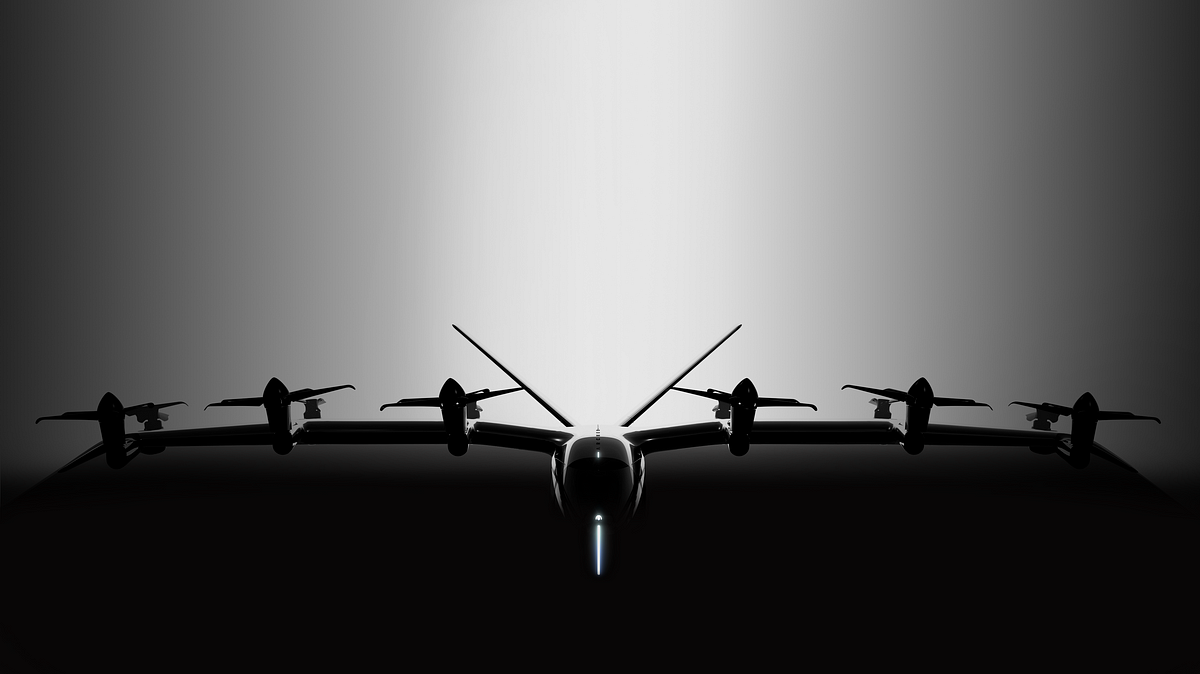
Archer plans to launch its electric vertical take off and landing (eVTOL) aircraft for intra-city…
Based in Santa Clara, California, Archer Aviation has created an innovative aerospace company that aims to bring commercial electric…
 medium.com
medium.com
A detailed interview with Archer that lays out what their long term plans are.
- Joined
- 27 May 2008
- Messages
- 1,045
- Reaction score
- 2,009

Archer plans to launch its electric vertical take off and landing (eVTOL) aircraft for intra-city…
Based in Santa Clara, California, Archer Aviation has created an innovative aerospace company that aims to bring commercial electric…medium.com
A detailed interview with Archer that lays out what their long term plans are.
From the attached interview;-
“The aircraft’s 12 rotors spin slower than helicopter blades and thus generate significantly less noise. “
Oh there, there little financial wizard- a typical comparable sized helio rotor spins at about 250-300 rpm.. Good luck Archer with getting anything other than noise out of a 2m diameter prop at less than this. (I haven’t the heart to tell him they spin at probably tens times the speed with close to tens times the losses;- propeller loses are tip dominated)
In general the questions are avoided and the few answers given just invite more questions that are not posed.
Last edited:
@Zoo Tycoon , it totally agree, the super lightweight Robin 44 helicopter (683 kg empty) has a rotor diameter of 10 m, that's twice as much rotor area as the Archer (12 x 2 m). The Archer aircraft will surly be much heavier due to the batterie mass, how shall that thing be able to start with "lower rotor spin" (" The aircraft’s 12 rotors spin slower than helicopter blades and thus generate significantly less noise.) ???
My English is not very sophisticated, but I would interpretate "lower rotor spin" with lower rpm...
A noise of only 45 db would be unbelievable quiet...
My English is not very sophisticated, but I would interpretate "lower rotor spin" with lower rpm...
A noise of only 45 db would be unbelievable quiet...
I think tip speed is what's referenced. Tip speed is rpm/60*r where r is the radius in feet or meter.
With a much smaller rotor, they can increase their rpm without reaching sonic speed at the tips. Hence generating less noise.
With a much smaller rotor, they can increase their rpm without reaching sonic speed at the tips. Hence generating less noise.
The specific disk load needs to be more than twice as high, this surly can"t be done with half the tip speed. You might increase the pitch angle for a fixed geometry rotor somewhat (it would help), but twice the disk load with less wing tip speed is surly impossible. Please note, the rear rotors have only two blades.
A starting noise of 45 db is incredible low, you could stand next to it and having a conversation by whispering.
Please correct me, but "lower rotor spin" sounds more like lower rpm to me.
A starting noise of 45 db is incredible low, you could stand next to it and having a conversation by whispering.
Please correct me, but "lower rotor spin" sounds more like lower rpm to me.
Similar threads
-
Russia is working on a VTOL Fighter for the 21st Century
- Started by philipp7
- Replies: 4
-
-
-
-
Japanese 2050 Space Elevator project (Obayashi Corporation)
- Started by Grey Havoc
- Replies: 83
